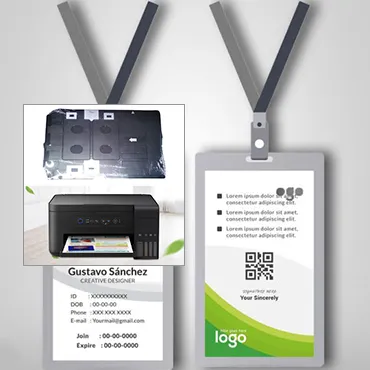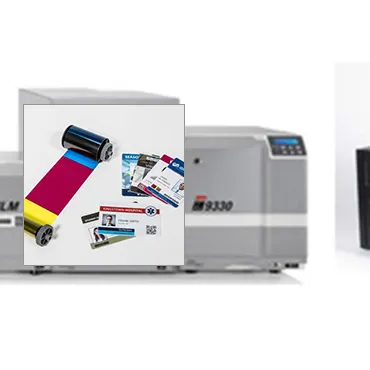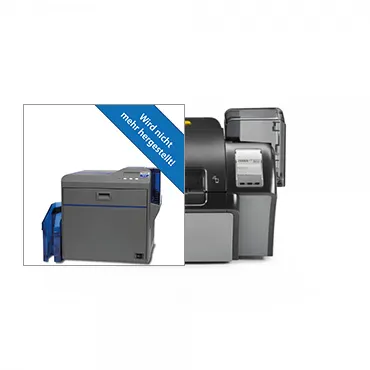Choosing Your Printer: Thermal vs Embossing Card Printers Explained
Table of Contents []
Thermal vs Embossing Card Printers
Welcome to Plastic Card ID : The Home of Professional Printing Solutions

Understanding Thermal Printing
Thermal printing is a digital printing process which produces a printed image by selectively heating coated thermochromic paper. The paper passes over the thermal print head, the coating turns black in the areas where it is heated, producing an image. This method offers incredible speed and efficiency.
Clients often choose thermal printing for its fast output and precise, high-quality resolution. It's particularly ideal for high-volume printing tasks, where time and clarity are of the essence.
The Elegance of Embossing Printing
Contrary to the smooth and sleek results of thermal printing, embossing printers provide a card with raised lettering and patterns. This tactile effect not only adds a visually appealing look but also creates a feel of sophistication and luxury.
Businesses looking to make their cards stand out, or offer that extra touch of class, often opt for embossing printing. It's a statement more than it is just a printing technique.
How Plastic Card ID Delivers the Best in Both Techniques
At Plastic Card ID , we specialize in both thermal and embossing card printers. We help our clients decide which printing technique to use based on their specific needs. While thermal printers offer swift production, embossing printers can provide that unique touch many premium cards require.
Clients can rest assured knowing we use the latest technology in both fields to ensure top-tier results. Your satisfaction is our priority, which is why we stand by the quality of our printing services.
Factors to Consider When Choosing a Card Printer

Volume and Speed
How many cards do you need to print, and how quickly? If your business demands a high output at a rapid pace, thermal printing is typically the way to go. It's designed for efficiency without compromising the quality of the print.
On the other hand, if you're looking to produce a smaller quantity of cards and time isn't as pressing, the distinctive look of an embossed card might be worth the extra bit of wait.
The 'Feel' Factor
What impression do you want to leave with your card? If you value the sense of quality that comes with something you can feel, such as raised numbers and letters, embossing is a fantastic choice. It literally stands out and can make your business stand out, too.
For many businesses, the physical touch of an embossed card can enhance brand perception, adding to the overall customer experience.
Cost Considerations
Budget plays an important role in any business decision, and printing is no exception. Thermal printers generally offer a lower cost-per-card due to the efficiency of the technology. If cost control is vital for your project, this might be the deciding factor.
Embossing, while generally more costly due to the intricate process and equipment involved, can be seen as an investment into the branding of your business. It's about weighing immediate costs against long-term brand value.
The Applications of Each Printing Technique

Thermal Printing for Everyday Use
Thermal printing shines when it comes to everyday applications. Here are just a few examples where it's commonly used:
- Employee ID cards
- Loyalty cards for retail stores
- Visitor badges for events
It provides the durability and clarity necessary for regular handling and scanning, which is key for such uses.
Embossing for a Touch of Class
Embossed cards are usually reserved for more special applications, where you want your card to offer a premium experience:
- Exclusive membership cards
- Luxury gift cards
- Custom credit cards
Whenever you want to elevate your business in the eyes of your clients, embossing is a reliable choice.
Situational Decision Making with Plastic Card ID
At Plastic Card ID , we understand that the choice between thermal and embossing printing isn't always clear-cut. Depending on the specifics of your project, one might suit you better than the other, and we're here to help make that decision easier.
Our experts can guide you through your printing project, looking at its context and requirements, and advise you on the best path to take for outstanding results.
Technical Advantages of Modern Card Printers

Thermal Printer Precision
A key advantage of thermal printers is their precision. These printers can produce intricate designs and crisp text without any smudging, making them ideal for detailed graphics and fine print-perfect for everything from barcodes to small-font legal information.
This precision carries over to color fidelity, ensuring that logos and brand colors are consistently reproduced, time after time.
Durability of Embossed Features
The embossing process isn't just about looks-it also enhances the durability of the cards. The raised elements are far less susceptible to wear and tear compared to flat, printed features.
If your cards will be frequently handled or require a long lifespan, embossing offers an added layer of resilience.
The Technical Support from Plastic Card ID
You don't need to be a tech whiz to get the best out of your card printers-Plastic Card ID is here to support you. With our guidance, you can fully leverage the technical advantages of both thermal and embossing printers.
From installation to troubleshooting, our team is just a call away at 800.835.7919 to ensure your printing goes smoothly.
Incorporating Branding into Your Card Design
Previous Page

